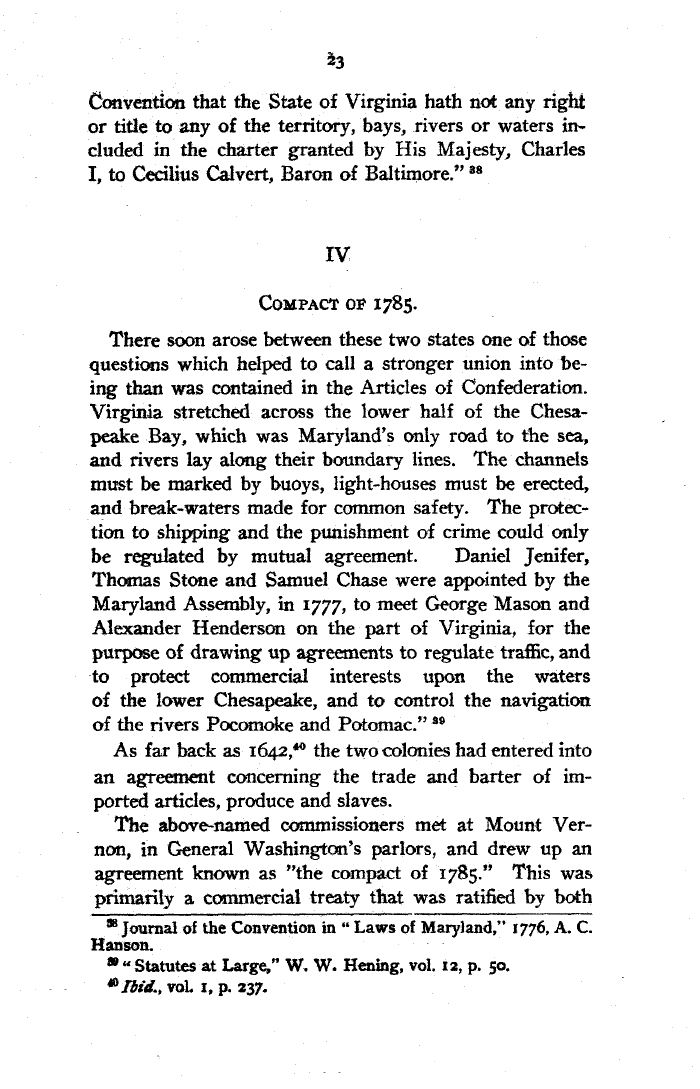| t3
Convention that the State of Virginia bath not any right
or title to any of the territory, bays, rivers or waters in-
cluded in the charter granted by His Majesty, Charles
i, to Cecilius Calvert, Baron of Baltimore." $8
IV
COMPACT Op' I7$5.
There soon arose between these two states one of those
questions which helped to call a stronger union into be-
ing than was contained in the Articles of Confederation.
Virginia stretched across the lower half of the Chesa-
peake Bay, which was Maryland's only road to the sea,
and rivers lay along their boundary lines. The channels
must be marked by buoys, light-houses must be erected,
and break-waters made for common safety. The protec-
tion to shipping and the punishment of crime could only
be regulated by mutual agreement. Daniel Jenifer,
Thomas Stone and Samuel Chase were appointed by the
Maryland Assembly, in 1777, to meet George Mason and
Alexander Henderson on the part of Virginia, for the
purpose of drawing up agreements to regulate traffic, and
to protect commercial interests upon the waters
of the lower Chesapeake, and to control the navigation
of the rivers Pocamoke and Potomac." '9
As far back as i642,s° the two colonies had entered into
an agreement concerning the trade and barter of im-
ported articles, produce and slaves.
The above-named commissioners met at Monist Ver-
non, in General Washington's parlors, and drew up an
agreement known as "the compact of i7$5." This was
primarily a commercial treaty that was ratified by both
I Journal of the Convention in " Laws o£ Maryland," 1776, A. C.
Hanson.
a° " Statutes at Large," W. W. Fieaing, vol. z s, p. 50.
41° Did., vnl. z, p. z37.
|

